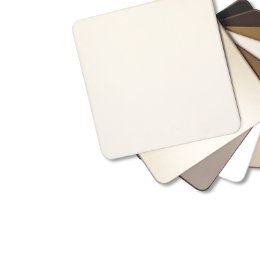3 Steps to Fail-Safe Composite Panel Performance
Observing IBC 2015 Section 1407 is one thing. Making sure the MCM panels you specify live up to it is another.
Metal composite materials (MCM) have proven to be one of the most versatile architectural cladding products in the designer’s palette. MCM panels can help a designer achieve nearly any exterior aesthetic they desire, with hundreds of styles and finishes available to achieve the architect’s vision.
Like any building material, specifying MCM comes with compliance responsibilities. What questions should you be asking at specification? What actions can you take to ensure the architectural panels you specify live up to the expectations the manufacturer claims? What should you look for—and look out for—when considering MCM cladding options? Here are three guidelines to keep in mind:
1. Start with IBC 2015 Section 1407.
The 2015 International Building Code Chapter 14 Section 1407 focuses on MCM compliance standards. The section’s first 10 subsections lay out the “thou shalts” every architect must observe in specifying compliant cladding material for any building type and height. The final four subsections review compliance for special situations.
As a general rule, MCM compliance can be understood by the 40-foot factor. A polyethylene MCM core is code-compliant for most structures 40 feet high and under (approximately four stories). Over 40 feet, the MCM core must be fire-resistant. Which leads many architects to ask, “How can I be certain the MCM core is actually fire-resistant?”

Student Learning Centre
Ryerson University
Toronto, ON, Canada
2. Verify with Code-Compliance Reports.
Wall assemblies with MCM must show compliance with NFPA 285, a long-established fire test standard demonstrating upward resistance to flame spread. Structures 40 feet and taller are subject to the NFPA 285 standard. Some overseas MCM manufacturers have been known to compromise the code using MCM with non-compliant core material, which can expose the specifier to legal risk. Independent, third-party evaluation services like the International Code Council Evaluation Service (ICC-ES) offer architects unbiased verification of MCM code compliance. MCM products that are supported with impartial, mainstream code compliance reports are recommended.
3. Confirm with Gold Standard Confidence.
MCM products that carry the Warnock Hersey (WH-ETL) Mark have been certified-compliant by the building and construction industry’s most rigorous product testing organization, according to James Moses, technical service manager for ALPOLIC® Materials, a leading U.S.-based MCM manufacturer. Maintaining the WH-ETL Mark is a continuous process, requiring quarterly inspection audits from Warnock Hersey auditing officials to ensure ongoing compliance.
Architects, engineers, designers, and other specifiers seeking to deliver code-compliant structures that make the most of MCM cladding looks and performance are encouraged to consider the guidelines. To learn more, view our technical resources.







